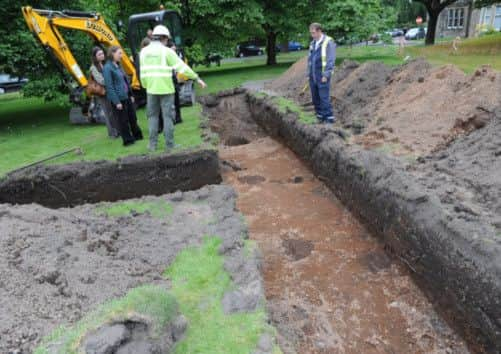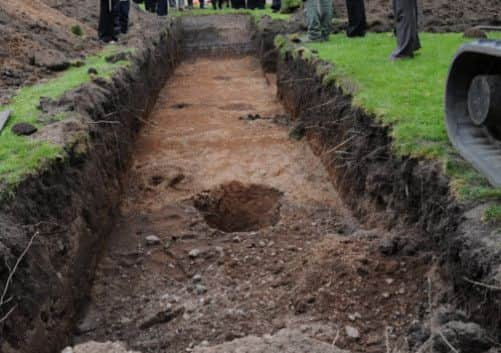Bannockburn stones could be thousands of years old


The stones, near the entrance to Police Scotland Central Division’s Randolphfield headquarters in Stirling, mark the place where Sir Thomas Randolph, one of the commanders of Robert the Bruce’s army, routed around 300 English cavalry on the first day of the battle in June 1314.
Now, archaeologists have discovered the circular boundary of an ancient burial ground which aligns with the stones, and appears to show they were there up to 3,000 years before the famous battle.
Advertisement
Hide AdThe archaeologists stumbled on the remains of the cemetery’s timber foundation posts as they carried out exploratory work ahead of the demolition of Stirling Council’s New Viewforth headquarters across the road.


Stirling Council archaeologist Murray Cook, who led the work, said yesterday: “Investigations at the Viewforth site have revealed a series of foundation posts associated with a boundary enclosing a cist cemetery, likely to be around 3,000 to 4,000 years old.
“The cemetery itself was located at the northern end of a stone alignment, two stones of which survive at nearby Randolphfield, which is associated with a skirmish between the Earl of Moray, Thomas Randolph, and the English knight Sir Robert Clifford on the first day of the Battle of Bannockburn.
“It has been said that the standing stones were put there to commemorate the place where the skirmish took place, but their alignment with this burial ground suggests they were probably connected.
“These two stones would have been part of a line towards the circular cemetery. So we are looking at the fragmented remains of a ritualistic landscape.


“It may have been celestial alignment or part of a processional route with other features on the landscape.
Advertisement
Hide Ad“But it would appear to prove that they were not put there after the battle.”
Mr Cook said that while it appeared unlikely that the stones were erected after Randolph’s famous victory, it was more likely that he chose the spot because of the standing stones.
Advertisement
Hide AdHe said the stones, which were near the old Roman road, would have been one of very few landmarks the Scot could have used to muster his men as the English advanced.
He said: “We know there was a skirmish, but it is very likely that the stones were already there.
“This was a landscape before maps, streets or buildings and this stone row would have been a well-known landmark and meeting place. “It could have acted as a muster point.”